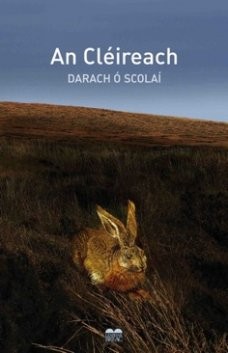Shortlisted for the IRISH BOOK AWARDS
One of the greatest epics ever written, now available in Modern Irish This is the story of Cú Chulainn, the Hound of Ulster, and of how he stood his ground, along with his charioteer Lao, against the great host of Ailill and Maeve. Here, we read of his youth, of how he got his name, of his single combat with Ferdia, and of the deadly quarrel between Ailill and Maeve which led to the taking of the Brown Bull of Cooley. Táin Bó Cuailnge was written in the 11th Century and was translated into Modern Irish by Darach Ó Scolaí.
One day, when Fionn was in Howth, a boat came ashore and a great big warrior jumped out. He said if there wasn't someone in Ireland who would outrun him in a race, he would tax the people of Ireland. At that, a great big clumsy-looking yellow churl appeared, and and he would race him...
When Fionn mac Cumhaill and Diorraing go astray in the dark woods, they find themselves in the house of their enemy, thus beginning a night of storytelling that lasts to this very day, and a story culminating in a wedding feast arson and murder on the banks of Lough Derg.
Combining the taut action-pacing of a thriller and the reflective depth of the literary novel, Darach Ó Scolaí has written a book to follow in the heels of his prize?winning best?seller An Cléireach. In this heady paranoic thriller set in a contemporary world of postmodernist conspiracies and cults, we meet Joe, a man trained in servility, as he sets off to serve 'better masters'. Following in his footsteps we set from Dublin to Paris to Istanbul as Joe rushes headlong towards his destiny.
From the time Fionn mac Cumhaill was a child, his enemies wished to kill him and to take his place at the head of the Fianna. To defend himself against his enemies, the female warrior Bómall taught Fionn how to fight. But, to survive, he had to learn to be brighter and cleverer than any other living person.
Micil and Nóra find themselves cut off at home by the rising seas. As the tide rises and the sea comes pouring in on the old couple, they find the time to debate the big questions: rising sea-levels and the receding Gaeltachts, cranky mná tí and gaeltacht colleges, Osama Bin Laden and the Ozone Layer, and, of course, LOVE. And then the man from the 'coláistí samhraidh' comes to rescuer them. Or does he?
“They saw a thin striped youngster enter, half his sword protruding behind his backside, the water squelching in his shoes, the tips of his ears sticking out of his old cloak....” Thus begins the retelling of a tale written by an anonymous writer 500 years ago, humorously depicting the goings-on that drive chieftains, gallowglasses, harpists, and the nation's rogues to distraction. 'An Ceithearnach Caoilriabhach' ewas written by an anonymous writer circa 1500. In this retelling of the story — with pen, brush, and rabelasian roars of laughter — the writer ands artrist commemorateds an hilarious tour which began 500 years agi, much-loved by Gael since. A fine retelling of the humorous old story, greatly enhanced by fine illustrations. A modern Irish version of an old story, which succeeds in maintaining the vigour, poetry, humour and bawdiness of the original. The illustrations, by the author, underline the humour. The story will appeal to both young and old with a sufficient knowledge of Irish. —Booksunlimited
Set in mid-17th century Ireland and Continental Europe, the narrative in An Cléireach is triggered by a single event that takes place during the Cromwellian invasion of Ireland, when a small band of the retreating Irishry gather on the side of a mountain and, despite the threat of massacre, for one night the rain lifts, the stars shine, and art and dreams take centre stage.
When the Department's last inspector goes in search of th last two native Irish speakers questions are raised that come a bit too close to the bone.
“Ó Scolaí is relentless in his outspoken observances and criticisms of language policies.... This is a satirical comedy about language, lies, bureaucracy, and Gaeltacht grants that cleverly uses language as the context of the dramatic conflict.” —Norma-Jean Kenny, The Galway Advertizer










